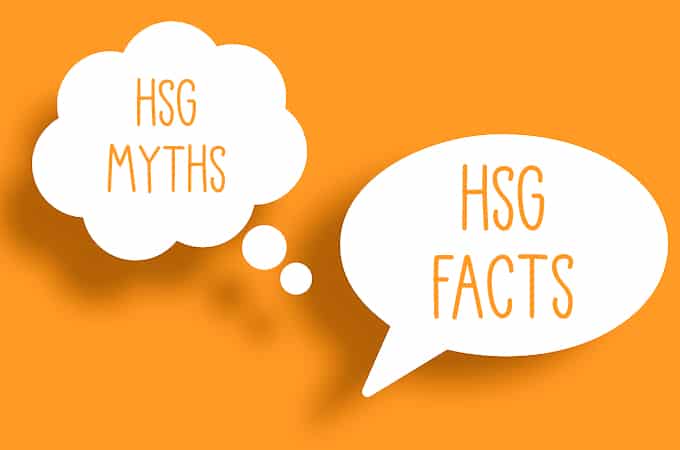Medical contribution by Anish A. Shah, M.D., M.H.S.
Anish Shah, M.D., M.H.S., is board certified in obstetrics and gynecology and reproductive endocrinology and infertility. Dr. Shah sees SGF patients at our Stony Point and Henrico locations in Richmond, VA.
If you’ve begun the process to evaluate the cause of your infertility, no doubt you are concerned about the testing that will be required. In particular, the HSG may be the test you are most dreading. Possibly, well-intended friends and family have shared their experiences in crisp detail. You’ve gone to Google for reassurance only to stumble upon blogs from other patients who have not had a good experience and are all too happy to discuss and embellish it. Unfortunately, now you are more anxious than before.
What is the HSG?
The Hysterosalpingogram (HSG) is performed routinely for patients having difficulty conceiving because it is an excellent test not only to see if a patient’s Fallopian tubes are open, but to assess whether the uterus has normal shape and make sure the cavity is not affected by fibroids, polyps or scar tissue. More recently, a large study from the Netherlands published in 2017 in the New England Journal of Medicine studied 1,000 women with unexplained infertility who underwent HSG. It found that HSG improved pregnancy rates after doing the HSG possibly by flushing debris from the Fallopian tubes. When doing an HSG, a liquid called contrast is injected into the uterus. Contrast is different from dye in that dye is a colored substance that cannot be picked up on x-rays, whereas contrast can be seen on x-rays. Contrast can also be oil-based or water-based. The study found 38% higher subsequent live birth rate in the oil-based group and 28% higher subsequent live birth rate in the water-based group. This was the first time it has been proven that the water-based contrast improved live birth rates. This finding is even more significant for you to know because in the United States, we cannot use oil-based contrast because of the risk of having spontaneous severe allergic reaction leading to death. Hence, oil-based contrast is banned by the FDA.
The HSG requires the assistance of a certain type of x-ray called a fluoroscopy. At Shady Grove Fertility, we have an x-ray room dedicated to these procedures. We also perform these procedures at our hospital x-ray facilities. It may sound complicated, but it is actually a very simple and often quick test that provides valuable information in a matter of a few minutes or less. And the best part? It rarely causes the discomfort you might expect.
What to expect during the HSG
A speculum is inserted into the vagina, similar to getting your annual pap smear. The cervix is cleansed with an antiseptic solution, and a small flexible catheter (much thinner than a coffee stirrer) is inserted through the opening of your cervix and into the uterine cavity. A small amount of contrast is passed through the catheter, filling the uterine cavity and then filling the Fallopian tubes. Fluoroscopy is a “live” x-ray that allows us to watch as the contrast is traveling through the tubes. The tubes are considered open when spillage of contrast occurs at the end of the Fallopian tubes. This means that the contrast has escaped the tube and thus your Fallopian tube should be able to “pick up” your ovulated egg. Often, this takes less than a minute, with less than 3 tsp of contrast. The amount of x-ray exposure is similar to the amount you receive from a dental x-ray. This procedure is not toxic to the ovaries or any other organs along with your overall health.
Related Content: Hysterosalpingogram (HSG): What To Expect
Even though this may be a step that patients dread, we often will tell the patients prior to the procedure they will be “pleasantly surprised”. The contrast is gently infused into the cavity and although some cramping may occur as the uterine cavity distends with this fluid, it is usually less than menstrual cramping. At Shady Grove, we use a special “low pressure catheter”, that most HSG facilities do not use, that results in significantly lower discomfort from the procedure compared to many other practices. This unique system distinguishes us from other places and is another reason people do not feel the discomforts others complain about in the Internet.
We’ve found that the patients who comment on intense cramping usually do so because of tubal blockage. If the contrast cannot pass through the Fallopian tube, there is increased pressure at the point of the blockage. By the time a patient expresses discomfort, we’ve recognized the problem, the catheter is removed and there is immediate relief. Again, all of this takes a minute or less. And to reduce the cramping, it is our practice at SGF to advise Ibuprofen or similar over the counter non-steroidal anti-inflammatory product 1 hour prior to the procedure on a full stomach.
Are there any complications with HSGs?
Complications are exceptionally rare. We advise our patients to refrain from intercourse for 24 hours after the procedure to avoid infection. No antibiotic is recommended prior to the procedure. However, if a Fallopian tube is seen to be enlarged and/or blocked or the contrast is seen abnormally absorbed, we will prescribe antibiotics to avoid infection. Rarely, less than 1%, people can develop a severe pelvic infection after the procedure. Any fevers post-procedure, you must let your doctor know immediately. Occasionally, patients will experience spotting a few days following. A potentially serious complication can result if you are allergic to the contrast. If you have had any allergic reaction to prior contrast (as used with a CT scan, or IVP) you need to notify your physician to determine if it is still safe to proceed and if you require additional medications prescribed prior to the procedure to reduce your risk for a reaction.
So, if the prospect of having a HSG causes your hands to sweat and your heart to palpitate, please recognize that if you are like most of our patients, you will quickly jump off the table exclaiming “that really wasn’t so bad”.
Editor’s Note: This blog was originally published in February 2011, and has been updated for accuracy and comprehensiveness as of January 2021.
To schedule a virtual consultation with an SGF physician, please call our New Patient Center at 1-888-761-1967 or submit this brief form.







